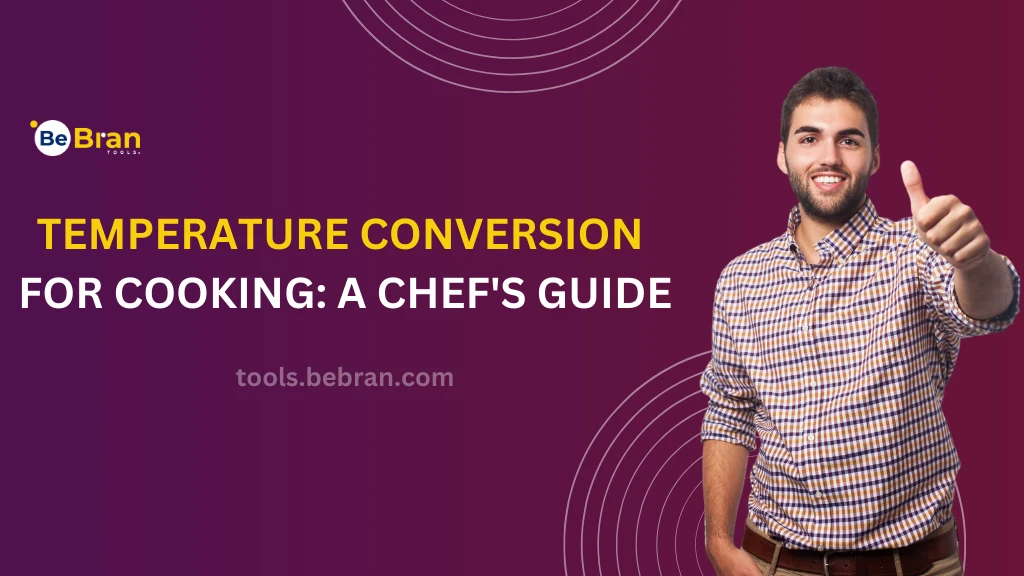
Temperature Conversion for Cooking: A Chef's Guide
Temperature Conversion is a crucial skill in cooking and baking, as it ensures that recipes turn out as intended, regardless of the temperature scale used in the original recipe. This guide will help both amateur and professional chefs to confidently convert temperatures between Fahrenheit, Celsius, and gas marks, commonly used in ovens.
Understanding the Basics Of Temperature Conversion
Before diving into temperature conversions, it's important to understand the different temperature scales:
- Fahrenheit (°F): Predominantly used in the United States, this scale measures the temperature where water freezes at 32°F and boils at 212°F.
- Celsius (°C): Commonly used around the world, in this scale water freezes at 0°C and boils at 100°C.
- Gas Mark: Used mainly in the UK and some other European countries, this scale doesn’t measure temperature in degrees but in gas marks, typically ranging from 1/4 (very slow/low) to 9 (very fast/high).
Check this out: The Science Behind Torque Converters Understanding The Basics | Binary Code To Human Readable Text
Tips for Accurate Conversions
- Use a Digital Thermometer: For precise cooking, especially in baking, use a digital thermometer. This tool will help you maintain accurate temperatures inside your oven.
- Round Off Appropriately: When converting, round off the temperature to the nearest 5 or 10 degrees for ease of use. For instance, 177°C can be rounded to 175°C.
- Adjust Cooking Times: Sometimes, a precise temperature conversion may not yield the exact same cooking or baking result due to differences in oven calibration. Be prepared to adjust cooking times slightly.
- Consider Altitude: High altitude affects cooking temperatures. Generally, cooking temperatures need to be increased at higher altitudes.
Conversion Charts
Having a conversion chart in your kitchen can be a handy reference. Below are some common conversions:
- Fahrenheit to Celsius:
- 300°F = 150°C
- 350°F = 175°C
- 400°F = 200°C
- 450°F = 225°C
- 500°F = 260°C
- Celsius to Gas Mark:
- 140°C = Gas Mark 1
- 150°C = Gas Mark 2
- 180°C = Gas Mark 4
- 200°C = Gas Mark 6
- 220°C = Gas Mark 7
Understanding Oven Types
Different ovens can behave differently. Fan-assisted or convection ovens usually cook faster and more evenly than conventional ovens. When using these, you may need to adjust the temperature slightly lower than what a recipe calls for.
Read More: Demystifying Torque Converters A Comprehensive Guide | Choosing The Right Torque Converter Tool For Your Vehicle
Conclusion
Mastering temperature conversions is key to successful cooking and baking. With practice, these conversions will become second nature. Always remember to consider your oven type and make adjustments as necessary. Happy cooking!
Free Tools: Free Average Calculator Tool Online | Free Probability Calculator Tool Online
Frequently Asked Questions
1. What is the easiest way to convert Fahrenheit to Celsius?
To convert Fahrenheit to Celsius, subtract 32 from the Fahrenheit temperature and multiply by 5/9.
2. How do I convert Celsius to Fahrenheit in cooking?
Multiply the Celsius temperature by 9/5 and add 32 to get the Fahrenheit equivalent.
3. Is there a formula for converting Celsius to Gas Marks?
No precise formula exists for this conversion; it's best to use a conversion chart.
4. Can oven temperatures vary despite correct conversions?
Yes, due to oven calibration differences and types, temperatures might slightly vary.
5. Why is it important to convert temperatures accurately in baking?
Accurate temperature ensures the desired texture and doneness in baked goods.
6. What's the conversion for 350°F to Celsius?
350°F is approximately equal to 177°C.
Q7. How does altitude affect cooking temperatures?
At higher altitudes, cooking temperatures generally need to be increased.
8. What temperature in Celsius is Gas Mark 4?
Gas Mark 4 is approximately 180°C.
9. Should I adjust cooking times when converting temperatures?
Yes, slight adjustments in cooking times might be needed for precise results.
10. Are digital thermometers helpful in cooking?
Digital thermometers are crucial for maintaining precise cooking temperatures, especially in baking.



